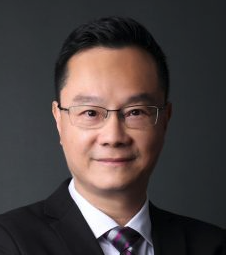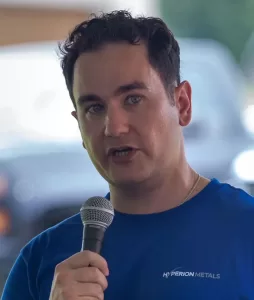What’s the SCOOP – 2022 Predictions
We are having one seminal year after another! 2019 was the year of trade wars, 2020 was the pandemic, and 2021 was the year supply chains broke, so what of 2022? I asked a lot of executives for their insight and prediction for the coming year and over a short series of features I’ll be sharing what they have to say. Here’s part one with a dozen or so executive views, more to follow…
From the c-suite of the EMS industry
Rainer Koppitz, CEO of KATEK Group
 The order books are extremely full and as soon as the shortage subsides a bit, I expect the first rays of light to appear, hopefully in Q1 and Q2. Then there will be a boom in our industry. I also expect a significant boost for electronics in green technologies. Only with the application of new technologies, and electronics always play a key role here, can greenhouse gas reduction be achieved, we will fail if we try without it. Of the 51 billion CO2 equivalents that mankind releases into the air every year, only around five percent was saved in the year the earth stood still. This low reduction occurred despite the almost standstill of the economy, of tourism, and of our social lives. This shows that it is impossible to go to zero simply by doing without, we must set free the power of technological innovation.
The order books are extremely full and as soon as the shortage subsides a bit, I expect the first rays of light to appear, hopefully in Q1 and Q2. Then there will be a boom in our industry. I also expect a significant boost for electronics in green technologies. Only with the application of new technologies, and electronics always play a key role here, can greenhouse gas reduction be achieved, we will fail if we try without it. Of the 51 billion CO2 equivalents that mankind releases into the air every year, only around five percent was saved in the year the earth stood still. This low reduction occurred despite the almost standstill of the economy, of tourism, and of our social lives. This shows that it is impossible to go to zero simply by doing without, we must set free the power of technological innovation.
When I look to 2022 I see some major industry trends driving growth in the electronics manufacturing industry. Automotive, particularly EVs, is one sector with huge growth and high potential. As car makers switch from internal combustion to electric they are reviewing their production and their supply chain. In many cases that means engaging with companies like us as technology partners, rather than relying on their traditional supply chain. This is an exciting opportunity for our industry. And there are numerous other sectors where growth is likely to be strong from IoT in the home to smart cities and e-mobility, some enabled by the rollout of 5G.
For the industry itself, we must drive for greater digital transformation, automation that works in unison and augments the skills and passion of our amazing staff, and of course we need to be agile and ready for the next disruption, whatever that might be.
I expect more consolidation and we will likely be a part of that as we continue to grow our business with more capacity, more capability and an offering which we believe adds the most value for our customers. As an optimist and a realist I can’t help but be excited and ambitious about the coming year. We are building a European Powerhouse in High Value Electronics and I personally believe the next year will be the best year ever for our industry and for KATEK.
Bruno Racualt, President and CEO at ALL Circuits
 Big trends for 2022 include more regionalisation of demand, resulting in a continuation of the European Manufacturing Renaissance, more supply chain disruption, increasing demand for local manufacturing, more automation, making regional manufacturing more efficient and competitive, and more overall demand thanks to sector growth in things like IoT and mobility.
Big trends for 2022 include more regionalisation of demand, resulting in a continuation of the European Manufacturing Renaissance, more supply chain disruption, increasing demand for local manufacturing, more automation, making regional manufacturing more efficient and competitive, and more overall demand thanks to sector growth in things like IoT and mobility.
That all means a big year for the industry, for Europe and for ALL Circuits. Meanwhile we continue to navigate through the choppy waters of supply chain disruptions. I am hoping, and optimistically expecting, the component shortages to ease in the first half of the year. But these shortages have shown us and our customers how fragile long global supply chains can be. This is underlining the need for shorter supply chains that are in the region.
If we can design, prototype, manufacture and deliver in the region, or even country, that products are consumed in, we can build more agile and robust supply chains and we can provide even better services to our customers.
Other key trends I see coming in 2022 and beyond include a more responsible approach to the environment. That means making products that are more sustainable, using manufacturing techniques that are more sustainable and once again developing shorter more sustainable supply chains.
In our home country of France, OEMs are starting to see the importance of manufacturing locally and the value of reducing risk and complexity from their supply chains. The government is playing its role in supporting us and the manufacturing industry, valuing the role manufacturing can play in a post pandemic recovery creating valuable rewarding jobs.
For ALL Circuits it will be a big year! We will open our extension to our Meung-sur-Loire facility just south of Paris, which has been built to cope with the addition of substantial manufacturing programs which will come online during the year. We will continue our digital transformation strategy as well as building our design muscle to become an even more valuable partner to our customers.
Mark Wood, CEO at Microart
 You know it’s hard not to be excited and stressed, in almost equal measure, as we look forward to 2022. On one hand our orderbook is the strongest it has ever been, with more and more North American companies ordering their products in North America, and longer commitments. And those localized shorter supply chains make a whole lot of sense, not just because of the issues and doubts over the security and viability of low cost Asian manufacturing, but also because shorter supply chains lowers dependence on logistics and makes sense environmentally. What is more, benefits like the same time zone, the same language, cultural similarities and ease of travel make conducting business simpler, more robust and adaptable.
You know it’s hard not to be excited and stressed, in almost equal measure, as we look forward to 2022. On one hand our orderbook is the strongest it has ever been, with more and more North American companies ordering their products in North America, and longer commitments. And those localized shorter supply chains make a whole lot of sense, not just because of the issues and doubts over the security and viability of low cost Asian manufacturing, but also because shorter supply chains lowers dependence on logistics and makes sense environmentally. What is more, benefits like the same time zone, the same language, cultural similarities and ease of travel make conducting business simpler, more robust and adaptable.
Customers seem to be bullish about their orderbook and we’re bullish about ours. Meanwhile, shortages and supply chain challenges are an everyday reality for the manufacturing industry. We’re constrained by the component shortages and what’s more we’re constrained and stressed by potential talent shortages. I am sure you are even experiencing it in your personal lives, longer lead times for car parts or repairs, some services now requiring deposits and other financial commitments, short staff at your favorite restaurants, the list goes on.
With respect to component shortages, this problem doesn’t feel like it’s going away any time soon, definitely not before 2022. It’s raised our inventory hugely, it’s slowed our WIP, it’s delayed shipment and it’s stressed our customer relationships. We’re understandably proud of the long term partnerships we’ve developed with our customers, and we equally understand they want their product out of the door and with their end users. This is hurting the entire product value chain and we’re working 25/7 to fix each and every issue as it comes up. We have planned ahead to support our customers. We invested in inventory, worked our partnership agreements to fund inventory with our customers and moved to a completely transparent quote model to tackle the ever changing supply constraints.
With respect to talent, readers might have heard the term “the great resignation”. This is going to amplify the talent challenges the manufacturing industry has had for some time. Staffing costs are rising and we are working hard to retain our team, against increased demand and the desire of competitors to poach our highly trained staff. We are working hard to change the term to “the great retention”, we are hiring in several departments and looking at market needs regularly to ensure we are positioned for another year of double digit growth..
In short, having spent the last two years riding an endless roller coaster, we aren’t expecting to get off anytime soon!!
Carl Hung, President and CEO at Season Group.
 For 2022, I foresee a supply chain crunch persisting and potentially worsening due to several reasons:
For 2022, I foresee a supply chain crunch persisting and potentially worsening due to several reasons:
- Many orders have been changed to non-cancellable non-reschedulable (NCNR) status which means that there is even less flexibility than before as demand continues to rise and component shortages persist. A way out is to turn towards engineering design flexibility, to give your products more component options to work with.
- Purchase orders (POs) from clients are placed much earlier in advance, and in turn our POs to suppliers are also made earlier. This trend of long lead times and early POs means that there will be great pressure on cash flows on us manufacturers. EMS companies that rely on banks for finance will be seriously challenged, especially if interest rates rise. Financial risk is definitely what EMS companies have to watch out for going into 2022.
- The emergence of the Omicron COVID-19 variant has also put many countries on red alert, which affects the shipping and logistics sector. Couple this with the holiday season where many shipping sector workers want to be home for Christmas or Lunar New Year, temporary shipping service delays will have large knock-on effects to the supply chain as we go into the new year.
While the times ahead may be tough, but working closely together with our customers and strategic partners will allow the EMS market to continue to grow! Let’s get ready for 2022!
From those Providing New Technology
Amar Hanspal, CEO and co-founder, Bright Machines
 In 2022 I believe that the investments in intelligent automation across manufacturing sectors will continue to thrive, giving rise to new C-suite titles such as Chief Automation Officer. A nod to the importance this role will play as factories further digitize. Automation can no longer be the sole provenance of regional managers or the enthusiastic technologist: it is starting to permeate every aspect of manufacturing and deserves a C-level executive to oversee and align automation efforts and initiatives. There will be new automation job titles created outside of the C-suite, too. Think back to when the manufacturing world discovered transformative methodologies like Six Sigma. It wasn’t long before you had process engineers and Six Sigma specialists throughout the organization. These are new jobs that wouldn’t have existed before the mainstreaming of those manufacturing methods. I’m excited for the next generation of engineers to find new factory floor and executive office opportunities alike.”
In 2022 I believe that the investments in intelligent automation across manufacturing sectors will continue to thrive, giving rise to new C-suite titles such as Chief Automation Officer. A nod to the importance this role will play as factories further digitize. Automation can no longer be the sole provenance of regional managers or the enthusiastic technologist: it is starting to permeate every aspect of manufacturing and deserves a C-level executive to oversee and align automation efforts and initiatives. There will be new automation job titles created outside of the C-suite, too. Think back to when the manufacturing world discovered transformative methodologies like Six Sigma. It wasn’t long before you had process engineers and Six Sigma specialists throughout the organization. These are new jobs that wouldn’t have existed before the mainstreaming of those manufacturing methods. I’m excited for the next generation of engineers to find new factory floor and executive office opportunities alike.”
Joel Scutchfield, General Manager of SMT Business Operations and Director of Sales at Koh Young, Inc.
 Having just taken over leadership of Koh Young Americas I can’t help but be excited about 2022. We managed to break records in 2021 and next year we expect to break them again. We’re about constant improvement, be that innovation, technology, performance, service, and yes, even market share. It’s been a couple of years of real disruption, and our desire to support our customers ‘come what may’ has seen us through and has seen many of our customers through tough times.
Having just taken over leadership of Koh Young Americas I can’t help but be excited about 2022. We managed to break records in 2021 and next year we expect to break them again. We’re about constant improvement, be that innovation, technology, performance, service, and yes, even market share. It’s been a couple of years of real disruption, and our desire to support our customers ‘come what may’ has seen us through and has seen many of our customers through tough times.
I believe we’re at the tipping point of digital transformation in manufacturing and I suspect we’ll look back at the twenties as the decade that started with a pandemic, but also the decade that transformed manufacturing worldwide. At the core of that digital transformation, and incidentally the journey to the smart factory and industry 4.0, is data, and perhaps the most important data is inspection data.
We see more of our customers taking a holistic approach and integrating inspection data from multiple sources, starting with SPI and AOI, and extending into other areas, like the inspection of coatings using our new Neptune System. They agree with our premise that inspection data is the ‘currency’ of the smart factory and that data needs to be accurate, reliable and delivered in real time. That data then needs to be turned into insight that can impact the performance of the process and the business. This transition from data to insight and then to value has never been more important and more plausible.
At an industry level I think the outlook is good. We’re seeing more regionalisation which is good for the whole of the Americas, and we’re seeing technologies, like EVs (Electric Vehicles) and IoT increasing the amount of electronics in our world. Yes, we have the challenges of component shortages to manage, and yes a potential shortage of talent in the industry, but I remain confident that our creativity and ingenuity as an industry will allow us to continue to grow and prosper.
Michael Ho, Director of Business Development at Cogiscan
 Digitalization, digitalization… digitalization! While many of us understood the value and importance of factory digitalization prior to 2020, the COVID-19 pandemic has significantly increased the pressure for accelerating digitalization in the electronics manufacturing industry. As we’ve all witnessed in the past year or so, electronics manufacturers are under tremendous pressure to address new challenges in relation to supply chain visibility, factory connectivity, and quality control – and all with fewer people to get these jobs done. The right factory digitalization strategy will help electronics manufacturers address these concerns, while capitalizing on the current global market recovery by satisfying their current customers and simultaneously recruiting new ones.
Digitalization, digitalization… digitalization! While many of us understood the value and importance of factory digitalization prior to 2020, the COVID-19 pandemic has significantly increased the pressure for accelerating digitalization in the electronics manufacturing industry. As we’ve all witnessed in the past year or so, electronics manufacturers are under tremendous pressure to address new challenges in relation to supply chain visibility, factory connectivity, and quality control – and all with fewer people to get these jobs done. The right factory digitalization strategy will help electronics manufacturers address these concerns, while capitalizing on the current global market recovery by satisfying their current customers and simultaneously recruiting new ones.
At Cogiscan, we’ve been working on our internal digitalization efforts to better ensure the evolution of our operations since late 2019. Luckily, our infrastructure was set up to easily adapt to the remote work situation of the pandemic, and we’ve successfully completed both internal and external digitalization initiatives. Coupled with the rebound of the market and our acquisition by the Dürr Group/iTAC Software AG, we are now uniquely positioned to offer a broad and relevant portfolio of smart factory solutions for electronics manufacturers. For 2022 we anticipate the most significant growth in our corporate history! We’re enthusiastic about the challenges this growth will bring and look forward to introducing new technological solutions to our customers and partners (both current and future).
Günter Lauber, CEO, SMT Solutions Segment & EVP, ASMPT.
 Sustainability and the digital transformation in electronics production
Sustainability and the digital transformation in electronics production
Nothing moves the electronics manufacturing industry more than the digital transformation. The latest trend, which was initiated by ASMPT at this year’s Productronica, focuses on open, modular, non-proprietary and retrofittable concepts. But “soft” factors like ethics and sustainability are also becoming increasingly important.
Proprietary systems, rigid production processes and the lack of options to choose the degree and pace of automation based on their own needs continue to slow companies down in their transition to Industry 4.0. The new Open Automation concept from ASM represents a future-oriented alternative to such inflexible models by offering solutions that go far beyond traditional automation concepts and give electronics manufacturers all the freedom they need to pick the most economically sensible path to their integrated smart factory. The underlying rule states that automation should never be an end in itself but focus on the best possible return on investment at all times. Open Automation makes it possible to implement automation in stages, integrate third-party equipment, and upgrade existing lines. Its essential components include open and standardized interfaces as well as innovative and standardized software solutions such as ASM Works and ASM Factory Automation.
The first World Ethical Electronics Forum (WEEF), which was held during this year’s Productronica, showed another clear trend, namely that ethics and sustainability increasingly influence business strategies and processes also in the electronics manufacturing industry. This includes factors such as low energy consumption and ecological product features – and, of course, people. With its vision of “Enabling the Digital World”, ASM embarked in this direction already quite some time ago, which is why it can present itself as a trailblazer in this field today. As part of this initiative, ASMPT measures its business success not just in numbers but also in the way it shapes a positive and sustainable future for customers, employees, partners, and society in general. Above all of this stands a change management strategy that governs change processes for everyone from top management to each individual employee.
Mariana Kobal and Shane Hassett, co-founders of WAZP
 To say that there have been major changes to business over the last two years is a big understatement. The pandemic highlighted the established weaknesses in the current processes, and ways of manufacturing and distributing products to the global consumer.
To say that there have been major changes to business over the last two years is a big understatement. The pandemic highlighted the established weaknesses in the current processes, and ways of manufacturing and distributing products to the global consumer.
Unfortunately, some of the issues arising from this are going to continue including supply shortages resulting from disrupted supply chains. However, it is not all doom and gloom, businesses both big and small are innovating or turning to innovative companies so they can have their products and components produced for their customers:
Reduced reliance on complex supply chains which, in turn, will see innovation and move towards on nearshore, distributed manufacturing where products and components will be produced as close as possible to the point of need. This will have significant impact on the resilience of business’ supply chain and the environmental and economic sustainability.
Once companies truly adopt on-demand production that is driven by actual demand and sales, they will move towards nearshore, distributed manufacturing, which of course will be aided by AI and Data-Driven Manufacturing.
More and more businesses are discovering that 3D Printing is a highly flexible production tool and that it can be used in on-demand direct-to-consumer production therefore, there will be a continued growth in adoption of the technology.
Governments and institutions are providing large amounts of resources to fund innovative projects globally but especially in the EU. There will be a focus on building strategic partnerships based on the triple helix model where private enterprise, public, and academic partners come together to share knowledge, resources, and expertise to deliver solutions and products across many sectors. This will move businesses further away from the old models of knowledge and technology hoarding.
Anastasios Arima, CEO at Hyperion Metals:
 Like the last two years, 2022 will be a huge year for supply chains! Right now, we have the double whammy of input materials and parts being in short supply and logistics being overpriced and underperforming. If recent events have taught us anything, it is that global supply chains are less resilient than we thought.
Like the last two years, 2022 will be a huge year for supply chains! Right now, we have the double whammy of input materials and parts being in short supply and logistics being overpriced and underperforming. If recent events have taught us anything, it is that global supply chains are less resilient than we thought.
I believe the answer is regionalised supply chains, to create more resilience, more adaptability and pose less threat to the environment. We’re working hard in our own arena here in the US to create sustainable supply chains for titanium and rare earth minerals. We’re doing this by developing a sustainable mineral extraction project in Tennessee and developing our own processes to convert the minerals into valuable metal products for industry. We’re also collaborating with the additive manufacturing industry through partnerships with companies like EOS to ensure a sustainable and traceable approach throughout the value chain.
I am hoping that 2022 is the year we start to ‘fix’ our supply chains, produce more critical products domestically, and look at the way goods are produced in a more responsible and holistic way. Supply chain teams now have more influence in the c-suite. And not just the c-suite, governments are recognising the importance of domestic supply chains for security and stability. And that’s without the added pressure of enabling an economic recovery that could be supported by more domestic manufacturing jobs.
I think the twenties will be more about ‘doing the right thing’ than previous decades. I’ve mentioned sustainability, but I believe that a holistic ESG approach to business is increasingly important. Issues like diversity, inclusion and accessibility are more important than ever before. The challenge is to meet or exceed the expectations of our stakeholders and consumers, and that’s a challenge that we relish.
Zeev Efrat, CEO of Cybord
 The electronic manufacturing industry has been exposed to two or three years of disruption and most recently to a year of real risk. Supply chain shortages have driven buyers to work with brokers, the gray market and other less predictable or secure channels. Because if they don’t they simply can’t ship products to their customers and their business risks stalling.
The electronic manufacturing industry has been exposed to two or three years of disruption and most recently to a year of real risk. Supply chain shortages have driven buyers to work with brokers, the gray market and other less predictable or secure channels. Because if they don’t they simply can’t ship products to their customers and their business risks stalling.
This has led to a zero trust approach by many OEMs and a desire to inspect every part that comes into the factory or finds its way onto a PCB. There are solutions that provide detailed checks for every incoming reel and every assembled part, providing100% component inspection, traceability and verification solutions at line speed. And I believe this isn’t just a short term solution.
The supply chain issues aren’t going to go away fast, so the risk of fake, old or recovered parts appearing among good parts continues. But more importantly the data provided by inspecting and recording every part is of fundamental value to the OEM and the contract manufacturer in terms of traceability and improved process performance.
This is all part of a bigger trend to digitally transform every process and every part of the value chain to ensure products are what they say they are and to use data to provide insight that improves manufacturing and business outcome.
All in all 2022 looks like another year of disruption with growing demand, uncertain supply, unpredictable freight and logistics, and an increasing understanding that smart digitally enabled supply chains are the future.
Ross Berntson, President and COO of Indium Corporation
 2021 was the year of the electric vehicle (EV), and it will continue well beyond 2022. This high impact technology suite will drive stunning innovations, including new power train technologies, faster and more efficient methods of charging, and different infrastructure platforms for the data processing that goes on in all these cars. Indium Corporation continues to supply high volumes of materials for critical EV components, such as our upcoming novel high-reliability system (to be announced in 2022) and Durafuse™ HT, a new high-lead replacement technology that’s particularly exciting for the semiconductor power discrete die-attach industry.
2021 was the year of the electric vehicle (EV), and it will continue well beyond 2022. This high impact technology suite will drive stunning innovations, including new power train technologies, faster and more efficient methods of charging, and different infrastructure platforms for the data processing that goes on in all these cars. Indium Corporation continues to supply high volumes of materials for critical EV components, such as our upcoming novel high-reliability system (to be announced in 2022) and Durafuse™ HT, a new high-lead replacement technology that’s particularly exciting for the semiconductor power discrete die-attach industry.
Related to this, but also moving beyond EVs, is the ongoing innovation in thermal interface materials (TIMs). Not only do autonomous vehicles’ AI chips require high-performance thermal conductivity, but the miniaturization of semiconductor circuit design demands advanced thermal management at the package and system level. Indium Corporation’s line of hybrid liquid metal solutions and traditional indium-based TIMs are in high demand as the industry addresses emerging trends. No one knows where it’s going to go next, but we’re at the frontier of materials development.
2021 presented significant supply chain disruptions across the world, particularly in semiconductors. We expect those to be largely cleared in early 2022. Indium Corporation remains committed to developing our supply chain by expanding our global facilities and nurturing critical partners. We’ll continue fortifying that global supply chain to provide materials when and where our customers need us.”











